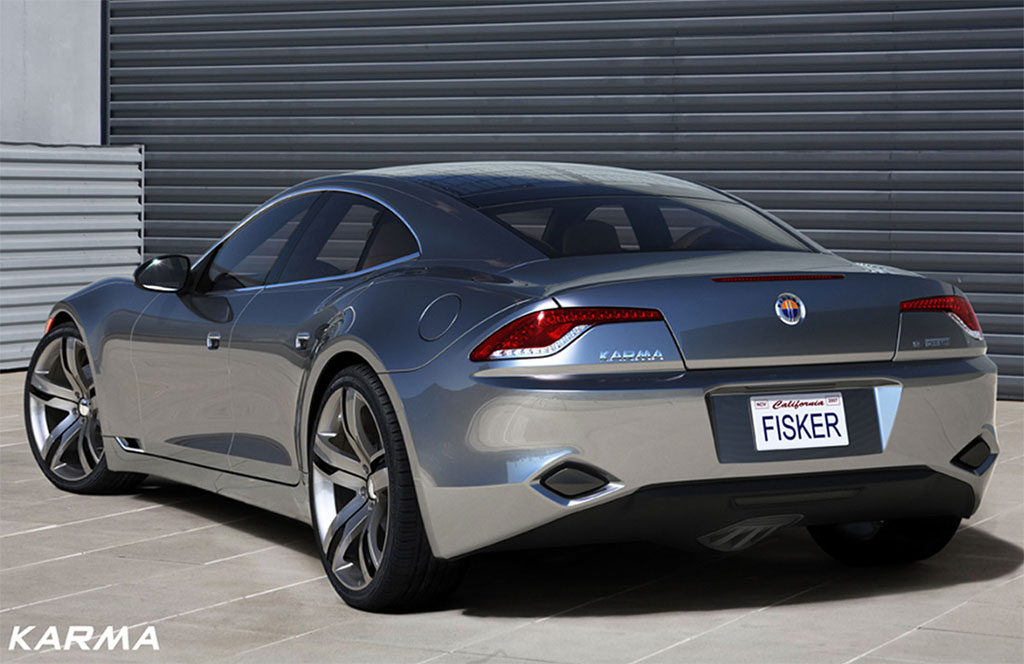
2011 Fisker Karma
California’s Fisker Automotive has already unveiled the production version of its Karma plug-in hybrid but at the 2010 Paris Auto Show this month the niche automaker will debut the first factory-built version.
This is an important milestone for Fisker and it’s also a sign that the car will be available for sale in showrooms very soon. In fact, Fisker will also use the Paris event to announce details about the expansion of its dealer network, which in the U.S. is expected to be selling the cars in February 2011.
Featuring a proprietary ‘Q-Drive’ electric powertrain, the Karma will have an all-electric range of 50 miles. After the all-electric 50 miles, a gasoline-powered 2.0-liter turbocharged, direct-injected GM Ecotec engine turns a generator to charge a lithium-ion battery. Essentially, the Karma is a range-extended electric vehicle just like the 2011 Chevrolet Volt.
With this balance of electric and gasoline driving, Fisker estimates that most Karma drivers who charge the vehicle overnight and commute less than 50 miles per day will be able to achieve an average fuel economy of 100 mpg per year.
There is also a roof-mounted solar panel for additional charge capacity of 0.5kWh per day. That's just a drop in the bucket of the 22.6kWh battery pack that the Karma is fitted with, however. The solar panel system can operate in any of three modes: auto, climate, and charging. When in climate, the power from the solar array is directed to the climate control system. Charging mode sends the sun's power directly to the batteries, and Auto mode, which is the default setting at power-on, allows the computer to select which is optimal based on current usage.
Drive comes from two electric motors with a combined output of 408 horsepower and a monstrous 959 pound-feet of torque, which is enough to send the vehicle to a top speed of 125 mph and push it from 0-60 mph in just 5.8 seconds. Those are impressive figures considering the 4,560 pound kerb weight of the car.
The vehicle also features two modes: stealth and sport. In stealth mode, which is the Fisker name for electric-only mode, the car has a max speed of 95 mph, while in sport mode the internal combustion engine joins in and takes the top speed up to the 125 mph mark. A third mode, called HEV, for hybrid electric vehicle, operates in a similar manner to a typical 'strong' hybrid: cutting the engine during deceleration, shutting the engine down at a stop, and using auto-start and electric take-off capabilities.
First shown as a concept back in 2008, it’s pleasing to see that Fisker has kept most of the original show car’s dramatic lines for the production version. Underneath the pretty sheet metal is an all-aluminum spaceframe made in cooperation with Norsk Hydro. The exterior body is a combination of aluminum panels and composite panels.
One point to note is the lack of a tailpipe despite there being an internal combustion engine. To optimize cooling and aerodynamics, the exhaust pipe from the engine is routed directly out behind the front wheels. A small functional side vent releases the hot air when the engine is turned on.
The 2011 Fisker Karma is being assembled by independent vehicle manufacturer Valmet in Finland. Annual volume is anticipated to reach 15,000 cars, with half of these expected to be sold in Europe. Pricing in the U.S. should start around the $87,900 mark.
[Fisker]
